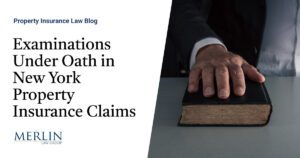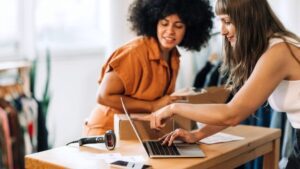Best Ford Mustangs of all time
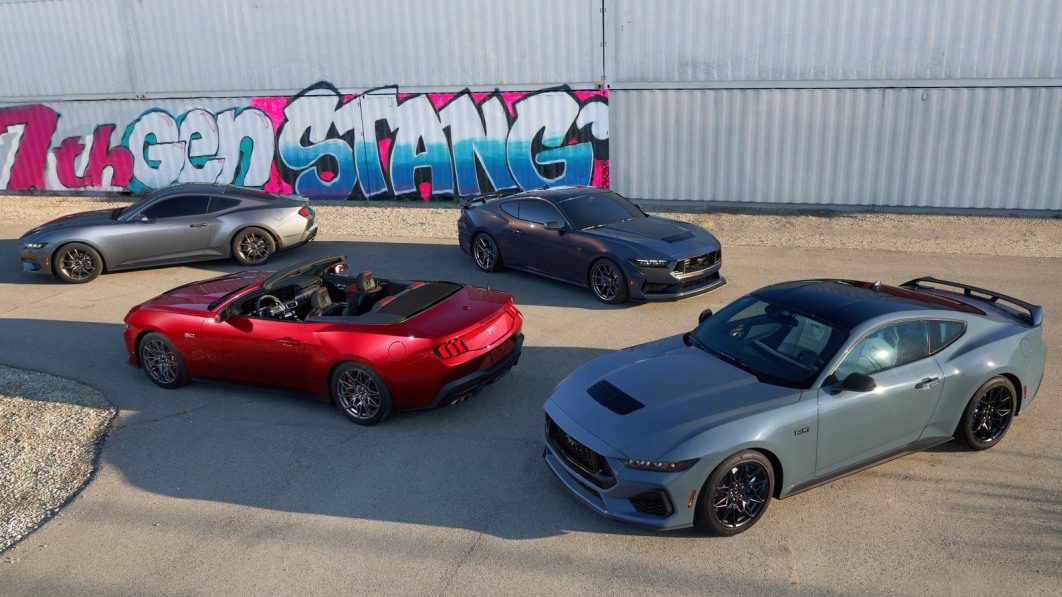
There are few automotive icons that can match the history and enthusiastic fans of the Ford Mustang. It all started way back in 1964, with a stunning long-hood, short-deck design based on the humble underpinnings of the Ford Falcon compact car. It went on to become almost impossibly successful, with more than 400,000 units sold in its first year and over a million within its first two years on the market. The 10 millionth Mustang was sold in 2018. No wonder the Mustang would inspire its own automotive category, appropriately known as “pony cars.”
With the brand-new seventh-generation Mustang having just debuted at the 2022 Detroit Auto Show (seen above) we thought it would be the perfect time to go back and take a look at the Mustang’s high points throughout the years (as opposed to some of its low points). Without further ado, here are the 13 best Ford Mustang models of all time.
1965 Ford Mustang Shelby GT350
We’re going to kick off our lists of the best Ford Mustang models of all time with one of the oldest of the breed. Ford launched its seminal pony car in 1964, and it was an instant success. Ford hoped to build 100,000 ‘Stangs in the first year but ended up quadrupling that figure before its first model year came and went … with a little help from creating model-year magic, that is.
The ultimate version of this first Mustang, in our minds at least, is the Shelby GT350 that was offered during the 1965 and 1966 model years. Each of them was powered by a 289 cubic-inch K-Code V8 engine. A bigger carburetor, high-rise intake manifold and free-flowing exhaust manifolds boosted power from 271 to 306 horsepower. The Shelby factory made a whole host of changes to the stock Mustang platform in order to make it competitive at the race track, and it worked well enough to win the SCCA racing championship in its class for three straight years.
1969 Ford Mustang Shelby GT500 Cobra Jet
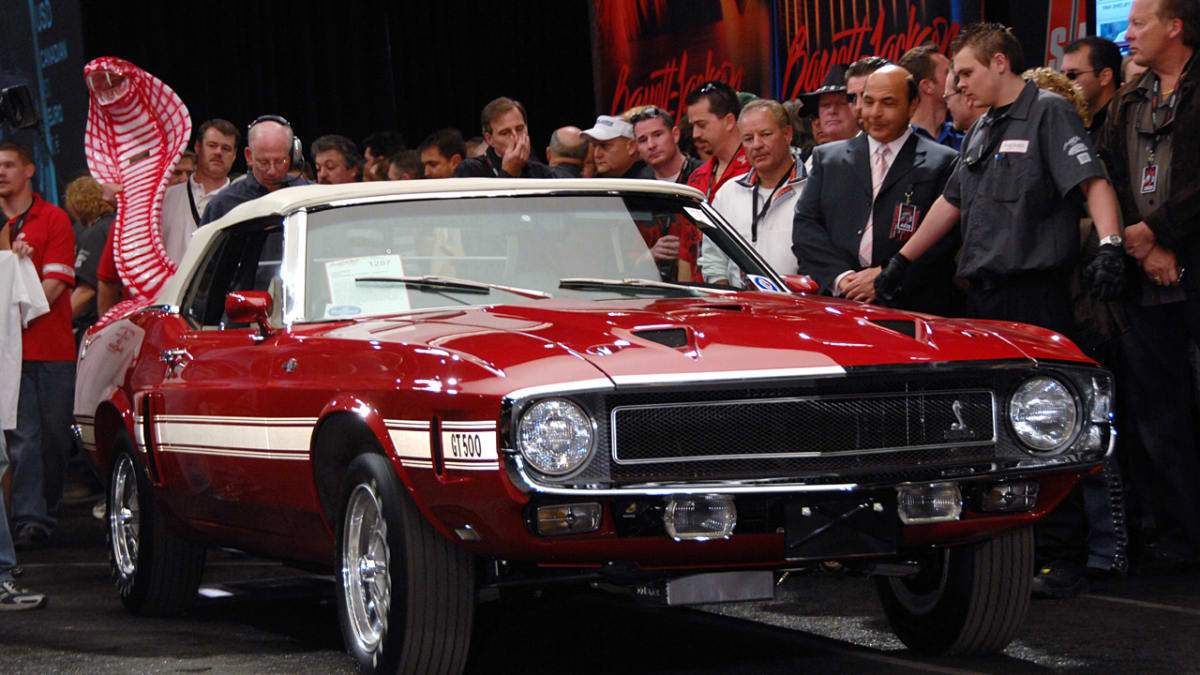
Interestingly enough, Carroll Shelby canceled his contract with Ford to produce Shelby-branded Mustangs following the 1969 model year. Several years had passed since the first GT350, and by 1969, Shelby’s actual involvement in the program was quite limited. Most of the 1969 Shelby GT500 was really designed by Ford, not Shelby, and it was a far cry from the nimble track-ready competition car that it had been.
Looking back at history, however, these 1969 (and carryover 1970) Shelby GT500s truly stand out from the rest of the pack with their unique styling — get a load of the extended hood and front fenders with their ram air ductwork — and the most powerful street-ready engine Ford had to offer. The 428 cubic-inch Cobra Jet V8 engine was rated at 335 hp and 440 pound-feet of torque.
1969 Ford Mustang Boss 429
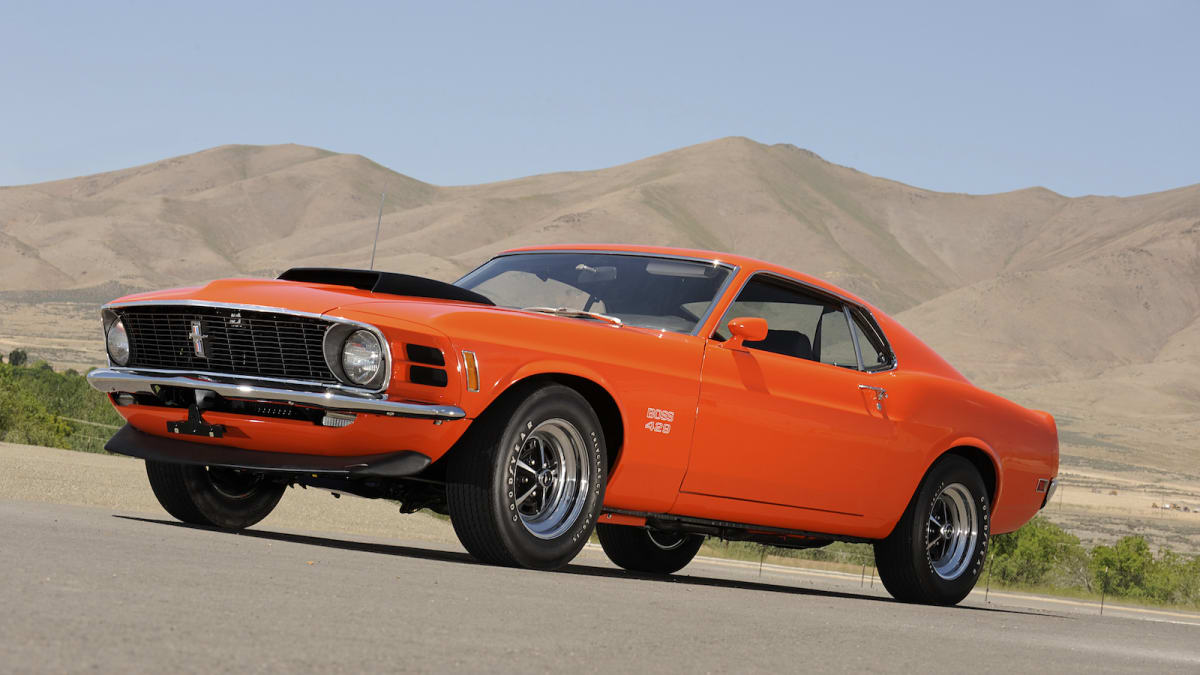
Did you notice how we said “most powerful street-ready engine Ford had to offer” when we looked at the Shelby above? Well, Ford did actually have a more powerful V8 in its stable, but it was designed for race tracks, not the street. But that didn’t stop the automaker from shoehorning the oversize 429 into the Mustang for the 1969 and carryover 1970 model years.
Ford wanted to use its new 429 V8 engine in NASCAR racing, but to legally do so, had to offer the engine to paying customers who wanted to own one for street use. It wasn’t easy to fit this big block engine in between the Mustang’s fenders, requiring a drastically modified front suspension setup that was carried out by an outfit in Michigan called Kar Kraft. The factory rated the NASCAR-special engine at 375 hp and 450 lb-ft. It was known as a cantankerous beast when it wasn’t being driven at full throttle, but when it was driven that way, it actually made way more power than its factory rating. It remains one of the coolest Mustang models of all time.
1970 Ford Mustang Boss 302
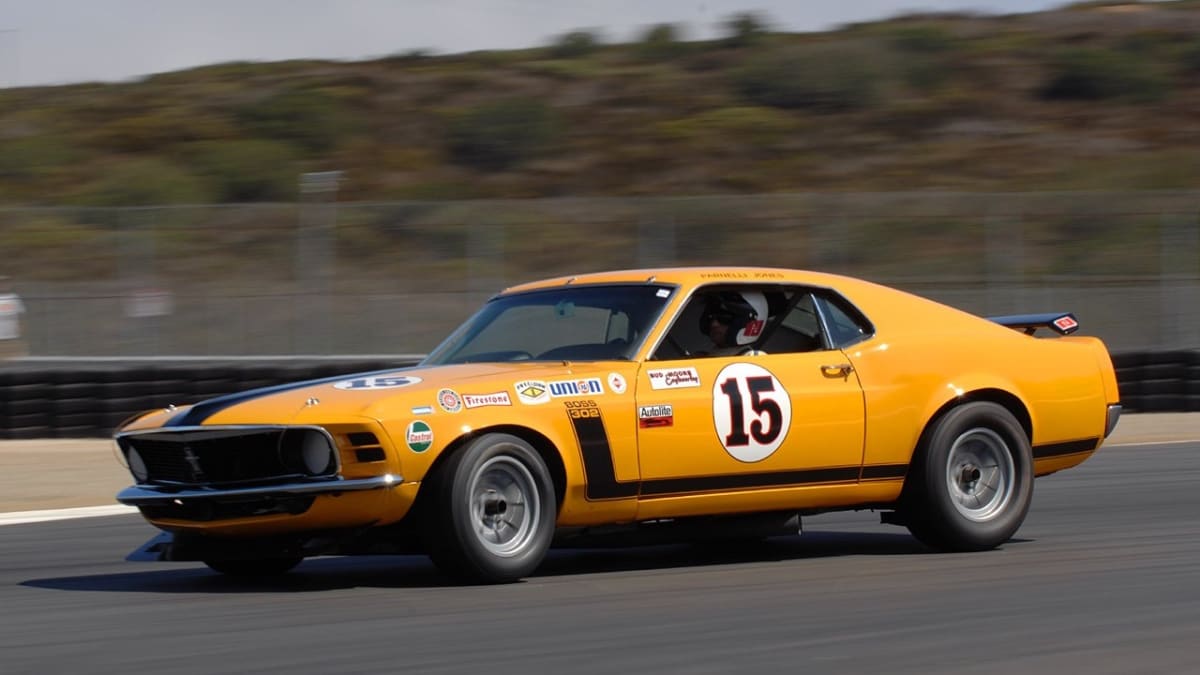
Getting back to the kind of racing the small (by 1960s and 1970s American standards, that is) Mustang was really meant for, we now take a look at the smaller-engined Boss sibling. The Boss 302 first appeared in 1969, aimed squarely at the Chevy Camaro Z/28. The pony car wars were won both on the sales floor and on tracks used for the Trans-Am racing series, and that’s where Ford looked to compete with the Boss 302.
The engine package combined a specially prepared version of Ford’s 302 cubic-inch Windsor V8 engine block with the free-flowing Cleveland heads. An aggressive camshaft with solid lifters, strong and lightweight engine internals and a bunch of track-spec modifications allowed the racing engine to rev well past the limits imposed on street engines. It was rated at 290 hp and an equal number of pound-feet. We went with the 1970 version simply because that was the year it beat Chevy to win the Trans-Am championship. They are just as cool today as they were back then.
1985.5 Ford Mustang SVO
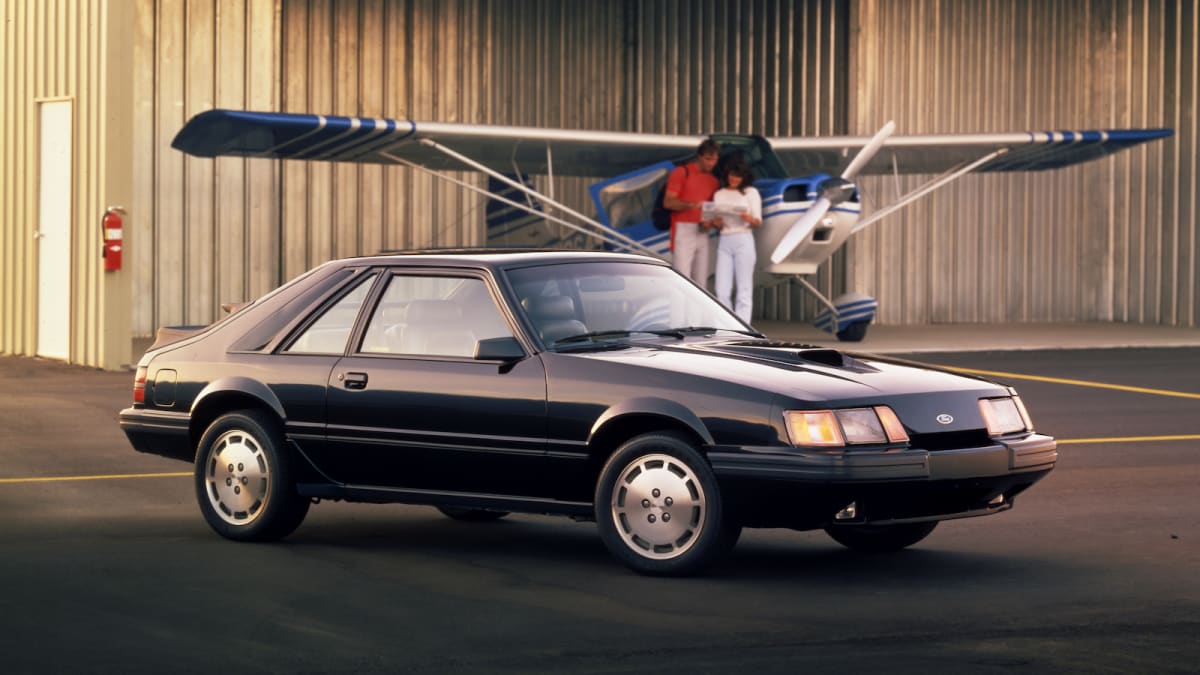
We’re graciously skipping over the remainder of the 1970s, not entirely because there weren’t any cool Mustangs sold — we’d go so far as to say even the late-1970s had a few interesting models that were very popular and proper cars for the era — but because nothing really stands out as better than its predecessor in any meaningful way. On to the 1980s, then, and specifically to the Ford Mustang SVO. We’re not keen to overlook the seminal Ford Mustang GT or its 5.0-liter (really 4.9, but who’s counting?) V8 engine, but the SVO was really the more interesting machine. It looked different, with a two-tier wing on the back and a ducted hood, but it’s under the bodywork where things get really cool.
Halfway through the 1985 model year, Ford increased the performance of the SVO’s 2.3-liter turbocharged four-cylinder engine, landing at a high point of 205 hp and 248 lb-ft of torque. That was enough to make the SVO a worthy competitor to its V8-powered GT sibling. But more important than sheer thrust were the major suspension and chassis improvements that made the SVO handle better than any Mustang that had come before.
1993 Ford Mustang SVT Cobra
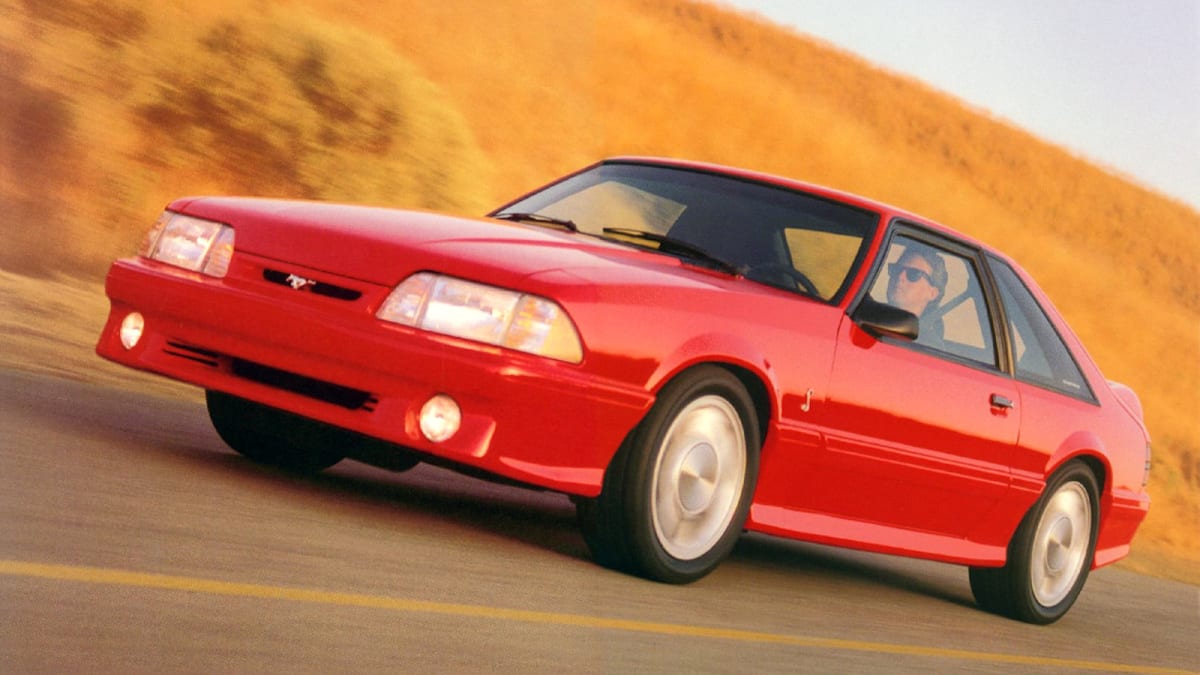
Ford unleashed its internal Special Vehicle Team (SVT) on the Mustang for the final year of its now-classic, squared-off Fox Body years, and the end result was the 1993 Ford Mustang SVT Cobra. The main party piece was a heavily modified 302-cubic-inch V8 engine that featured GT-40 “High Flow” cast iron cylinder heads and roller rocker arms. The intake manifold was unique, the camshaft was aggressive, the fuel injectors were enlarged, a new computer system was installed and a high-flow exhaust system was bolted underneath. The end result was 235 hp and 280 lb-ft. That doesn’t sound impressive today, but it was excellent for the time period.
For race duty, a higher-spec Cobra R was developed with upgraded suspension and driveline components. Everything that wasn’t necessary for speed was stripped out, including the rear seat and the air conditioning, dropping 450 pounds of weight from the regular Cobra (though some track-ready equipment added some of that back). Not many were made, and it’s a serious collectible today.
2000 Ford Mustang SVT Cobra R

Look at that bright red Mustang up above. Looks like a race car, doesn’t it? There’s good reason for that. Ford threw all the go-fast goodies it had available at the 2000 SVT Cobra R, with major modifications made to the powertrain, suspension, exterior aero package and the interior. In fact, the entire rear seat was gone. So was the air conditioning, radio and cruise control. This was as close a Ford customer could get to a street-legal race car in the year 2000.
Ford put a 5.4-liter V8 engine (originally designed for truck use) in the 2000 Mustang SVT Cobra R that featured dual-overhead-cam heads and a redline of 6,500 rpm. It produced 385 hp and 385 lb-ft, sent to the rear wheels through a short-ratio Tremec T-56 six-speed transmission. The Borla-branded exhaust included an X-pipe and exited in front of the rear wheels, necessitating a V6-style rear bumper that lacked exhaust cutouts. The chassis was upgraded with Eibach springs, Bilstein shocks, Brembo brakes and a race-spec fuel cell in the hindquarters.
2004 Ford Mustang SVT Cobra (Mystichrome)
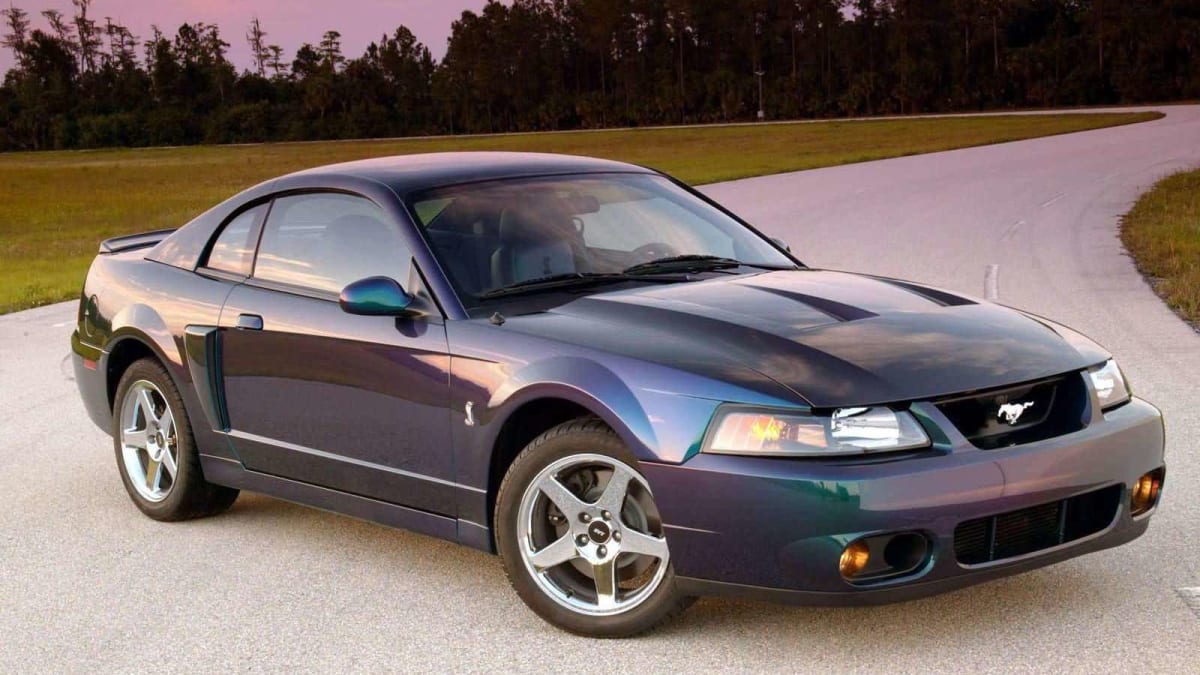
We’re not singling the 2004 Ford Mustang SVT Cobra just for its paint, but we’re not saying it doesn’t play a part in this car’s cool factor, either. The 2004 SVT Cobra wasn’t all that different from the 2003 edition, which introduced — sorry, Arnold — the world to the Terminator. The supercharged, 32-valve DOHC, 4.6-liter V8 engine spun out 390 hp and 390 lb-ft, at least according to the factory. Then owners started putting them on dynos only to find out they really made quite a bit more than that. Magazine testers of the era routinely recorded 0-60 times of under 5 seconds and quarter-mile ETs in the 12s.
There was more to the car than its engine, of course, but that was clearly the star of the show. The 2004 edition added optional Mystichrome paint, seen above, that changes colors depending on the angle and lighting. It was purple, it was blue, it was green, and, well, it was awesome. Ford charged customers $3,650 for the paint job, and a grand total of 1,010 Mystichrome SVT Cobras were produced, 515 of them coupes and 495 of them convertibles.
2012 Ford Mustang Boss 302 Laguna Seca edition
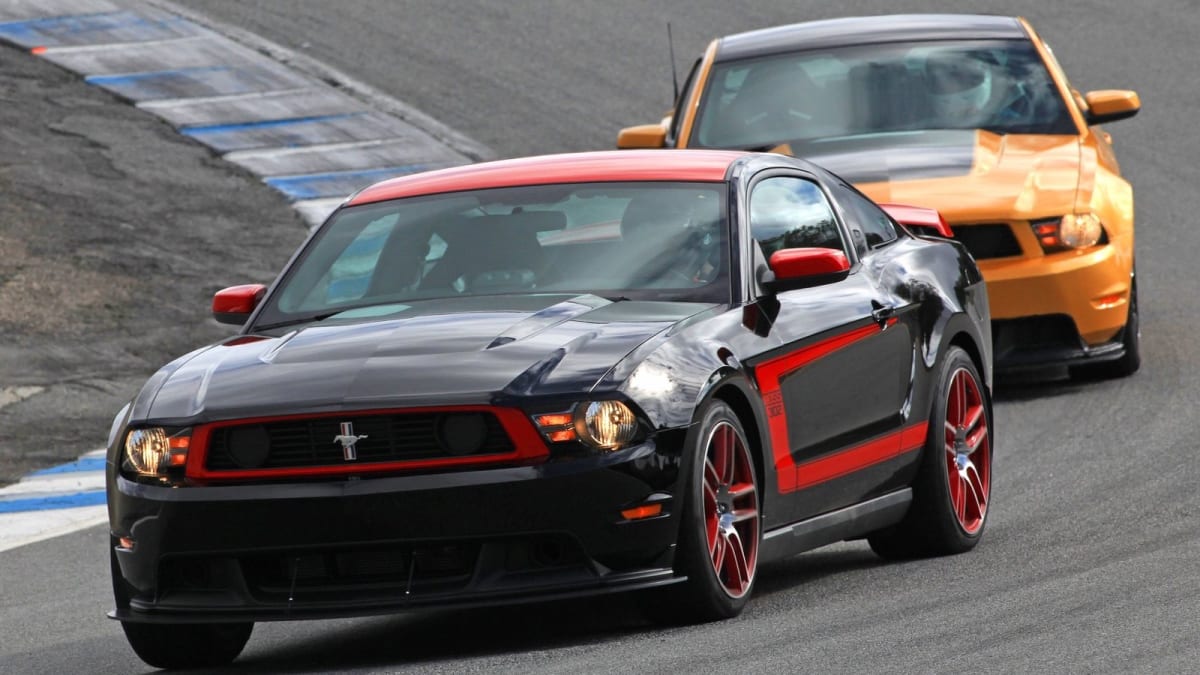
Jim Farley, now CEO but back then Ford’s head honcho of marketing, told us that the 2012 Mustang Boss 302 was “so much more than a nostalgia project to bring back the Boss.” He continued, “If we wanted to do that, we could take a 5.0-liter, put some stripes and spoilers and other upgrades on it and that would be it. It was not a means to an end. The Boss 302 was originally a means to an end. It was a production car to go racing. This is a completely different project. We were not going to do this project unless we could beat an M3 at this track.” This track being the famed Mazda Raceway Laguna Seca.
The limited-edition Laguna Seca took the same 444-hp 5.0-liter V8 with its 7,500-rpm redline as the regular Boss 302 edition and added track-ready bits like an aerodynamics package with a front splitter so aggressive it had to be installed post-title due to crash regulations, plus lightweight wheels, Pirelli R-compound tires, an air scoop on the transmission for additional cooling, an air duct kit for the front brakes, a dash-mounted gauge pack and a nifty looking cross brace that replaces the rear seats. Recaro seats and Torsen differential also came standard.
2013 Ford Mustang Shelby GT500
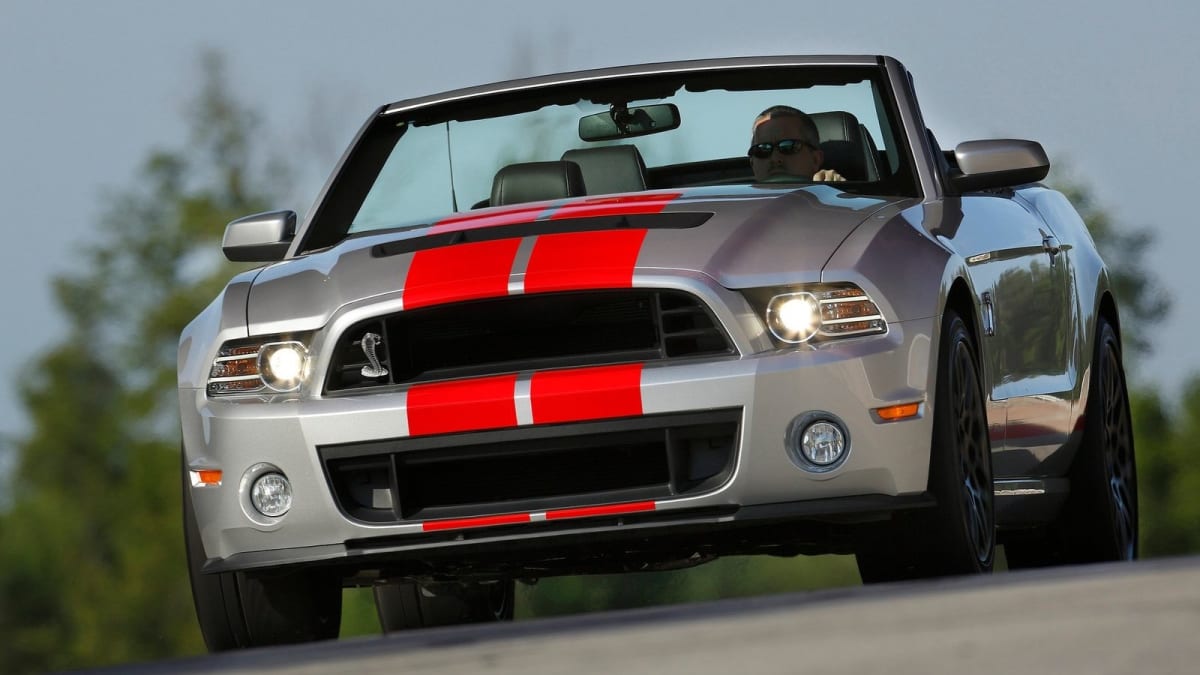
With a 5.8-liter supercharged V8 spinning out 662 ponies and 661 lb-ft, the 2013 GT500 could hit a top speed of 202 miles per hour. When we got the chance to drive the beast on the street, we called it “Stupid, stinking, earth-shatteringly fast. Ignorantly fast, even.” With Launch Control set properly and on the right asphalt, the 2013 GT500 can hustle from 0-60 in a scant 3.7 seconds and on through the quarter mile in 11.7 seconds. That made the GT500 quicker than the contemporary Porsche 911 Carrera, Ferrari California and Mercedes-Benz SLS AMG. Despite all that, it was a pleasure to drive on the street.
2015 Ford Mustang Shelby GT350
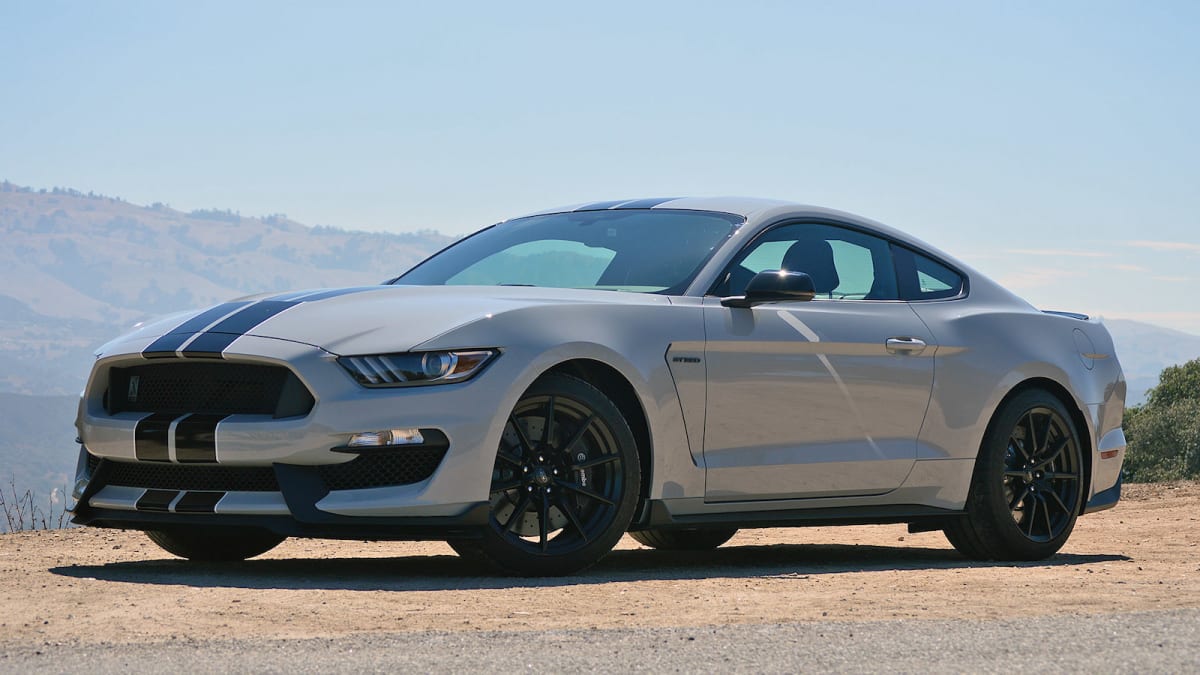
Ford did something unexpected with the 2015 Shelby GT350. Unlike the GT500 and its 5.8-liter supercharged engine, the GT350’s V8 displaced 5.2 liters and was naturally aspirated. Its big claim to fame, though, was its flat-plane crankshaft, which allowed for a mind-blowing redline at 8,250 rpm and a sound unlike any heard in a Mustang before. At 526 horsepower and 429 pound-feet of torque, some 102-hp per liter, there was enough power on tap for staggering acceleration whenever you asked for it.
We so love this Ford Mustang Shelby GT350 that we eulogized it when we found out it was leaving the market after the 2020 model year. As we said then, “So long, GT350. Your roaring and yowling will be missed.”
2019 Ford Mustang Bullitt
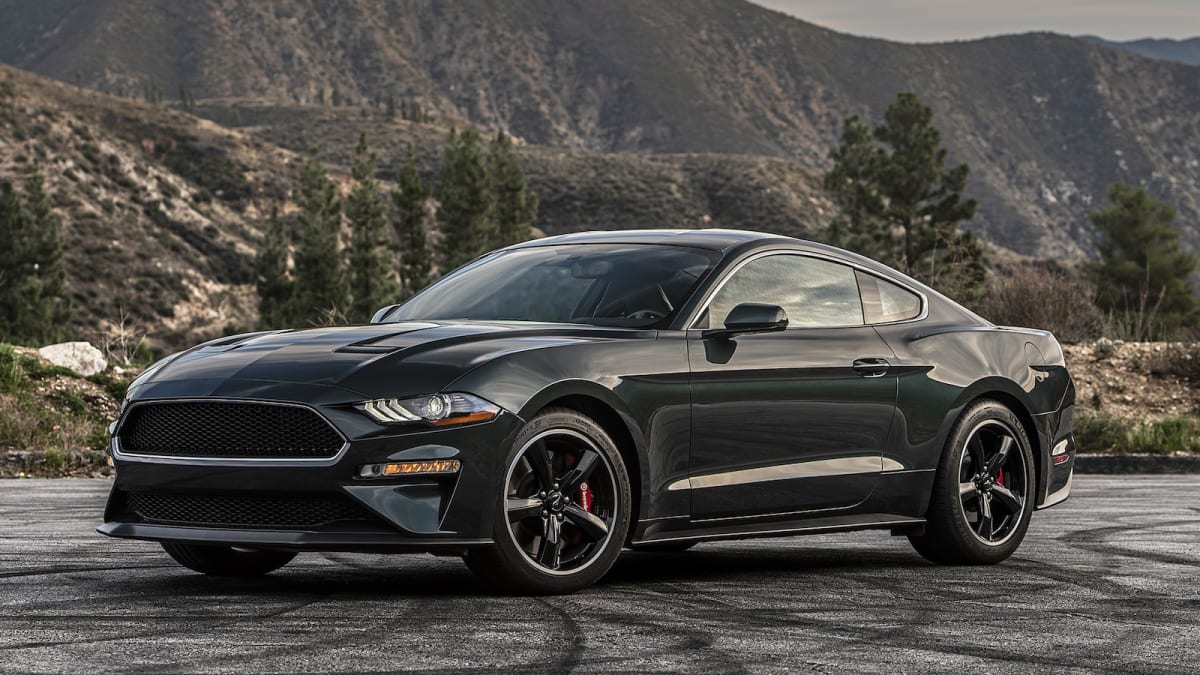
The Mustang Bullitt didn’t do anything better or worse than a similarly specced Performance Package 1 car. What the Bullitt brought to the table is taking the thoroughly enjoyable character of the 2019 Mustang, and using its additional refinements and unique bits as a lens to focus it into an additional feeling of specialness. It succeeds. It may, mechanically, just be a GT with a mild power bump — 480 hp and 420 lb-ft — and some well-tuned factory handling parts. But there’s a subtle but perceptible magnifying effect: Driving the Bullitt is, McQueen connection notwithstanding, a cooler experience.
When we first tested it, we said, “This is, quite simply, the best-looking, best-sounding Mustang around – and if the GT350’s flat-plane character leaves you flat, this is the best Mustang, period.”
2020 Ford Mustang Shelby GT500

Considering how we felt about the far less powerful GT350 and GT350R — considering them among the most engaging, capable, and rewarding sports cars you could buy — we had one major question about the 760-hp (!) 2020 GT500: Can this thing be anywhere nearly as good?
Our conclusion after driving it? “If you’re on a race track, your mind will be blown.”
Despite being seemingly built specifically to go around a race track as quickly as possible, the massively overpowered 2020 GT500 is a peach on the street.
So far, the 2020 Shelby GT500 is the ultimate Mustang that Ford has ever built. We can’t wait to find out what’s next.
Related video:
